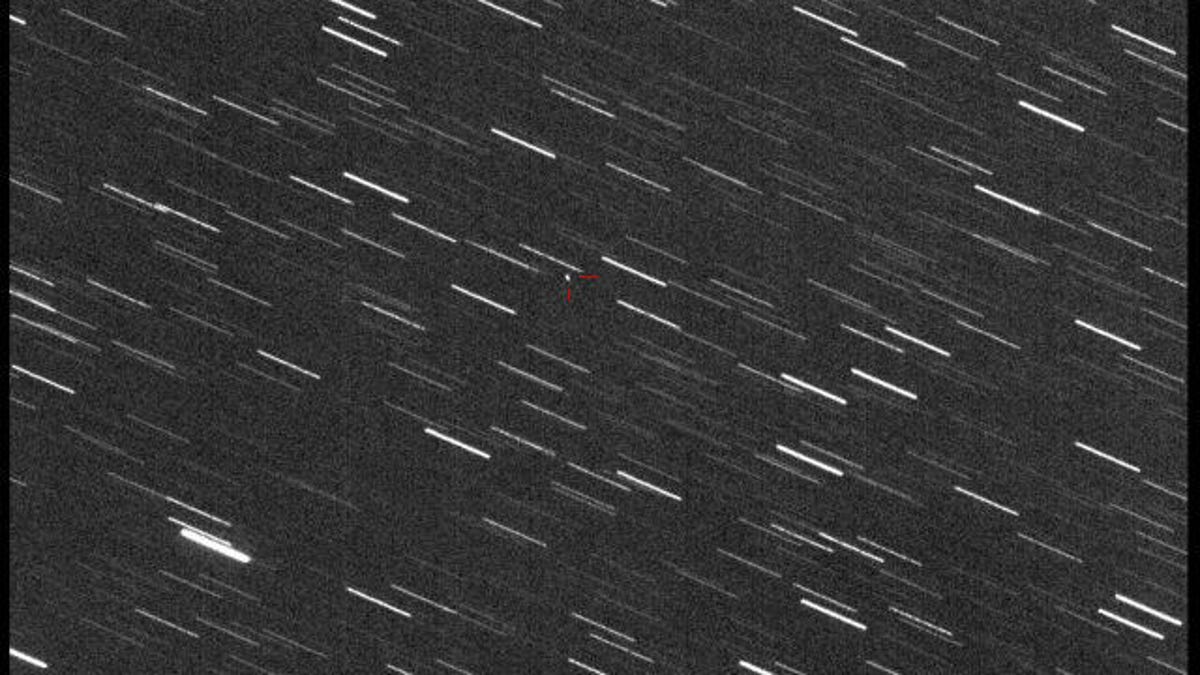See the bus-size asteroid caught buzzing past Earth
New space rocks in our neighborhood are found all the time, often just before they pay us a visit. Cameras caught Asteroid DV1 passing by us much closer than the moon shortly after being discovered.

An asteroid the size of a bus whizzed by us three times closer than the distance to the moon late Thursday, waving for the cameras as ii passed.
The space rock named 2018 DV1 is in the middle of the above image from the Italy-based Virtual Telescope Project that was taken remotely using a robotic telescope at Arizona's Tenagra Observatories.
The 10-second exposure tracked the asteroid's movement, which is why it appears as a sharp dot marked with two red lines among a background of star trails. The image shows the moment of the asteroid's closest pass at a cosmically nearby but still safe distance of 105,000 km (65,244 miles).
The news of this ominous visitor might make some people freak out, but we get fly-bys like this several times a year that pass quietly without incident. In fact, one asteroid came almost three times as close to our planet on Jan. 18 and a pair of celestial wanderers made similar passes on a single day last month.
We also had another one slip between the moon and here on Monday, which the Virtual Telescope Project also managed to photograph pretty clearly.
Italian astronomer Gianluca Masi, who's with the project, hosted a live webcast of 2018 DV1's visit, and you can watch the whole thing via the embedded feed below.
In recent years we've become more aware of the number of space rocks in our cosmic neighborhood, especially after one went completely undetected in 2013 before slamming into the atmosphere over Russia, blowing out windows and causing numerous injuries.
Over 15,000 near-Earth asteroids have been cataloged, but we continue to spot new ones all the time. NASA even has a spacecraft heading for a large asteroid right now so we can learn more about them and perhaps be better prepared if we ever come across one that's aimed to send us the way of the dinosaurs.
First published, March 1, 1:04 p.m. PT.
Update, March 2 at 10:49 a.m. PT: Add details and an image of the asteroid's pass.
Crowd Control: A crowdsourced science fiction novel written by CNET readers.
Solving for XX: The tech industry seeks to overcome outdated ideas about "women in tech."

